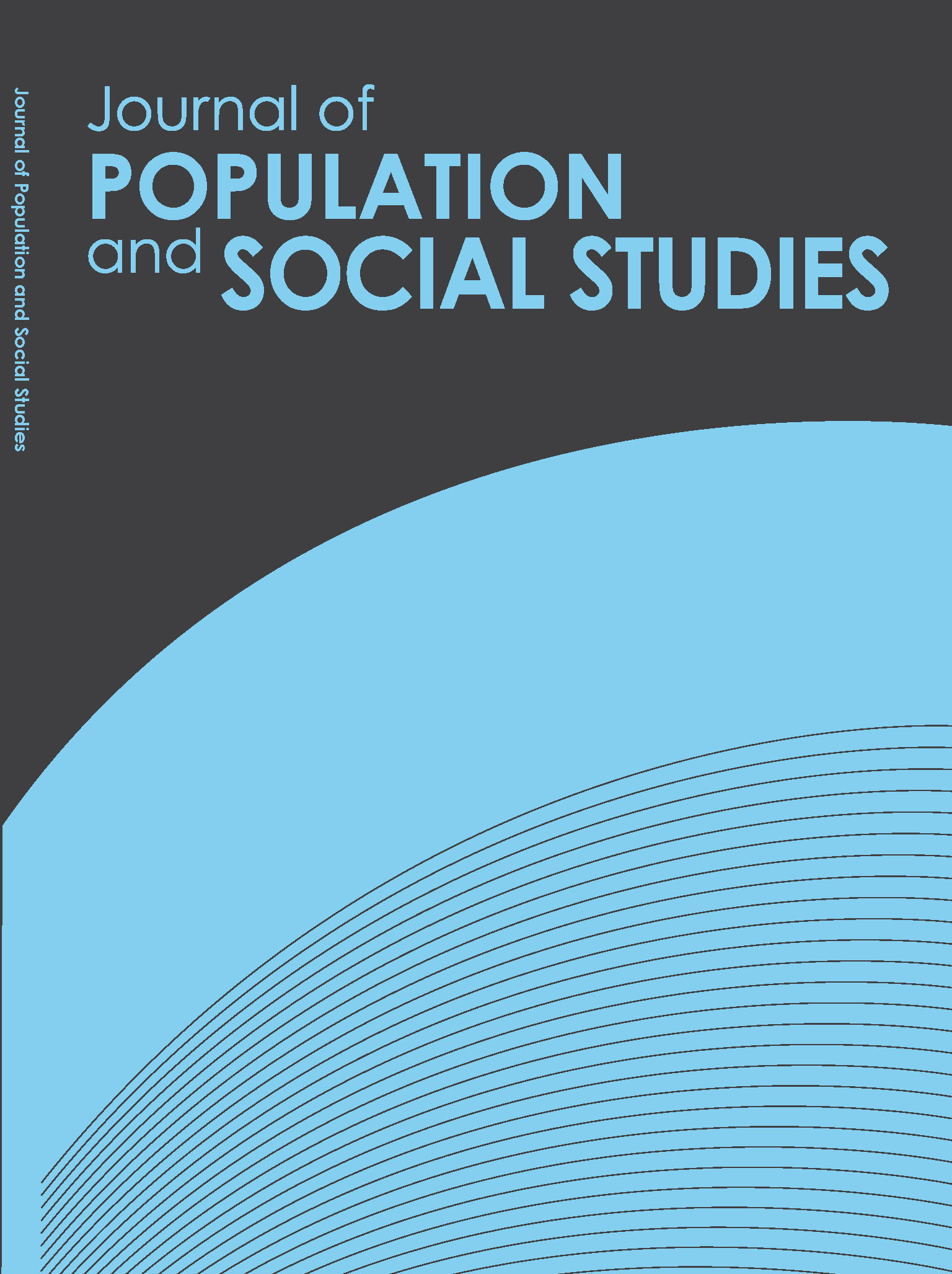Effect of Population Dynamics and Mechanization on Agricultural Land Use: Evidence from Nang Rong, Thailand
Main Article Content
Abstract
Article Details
References
• Boserup, E. (1965). The Conditions of Agricultural Growth: The Economics of Agrarian Change Under Population Pressure. Chicago: Aldine.
• Boserup, E. (1981). Population and Technological Change: A Study of Long-Term Trends. New York: The University of Chicago Press.
• Charuppat, T. (1998). Forest situation in the past 37 years (1961-1998). Bangkok: Royal Forestry Department (in Thai).Entwisle, B., Walsh, S.J., Rindfuss, R., (1997). Population Growth and the Extensification of Agriculture in Nang Rong, Thailand. Paper presented at the annual meetings of the Population Association of America. Washington, D.C.
• Entwisle, B. & Chamratrithirong, A. (1998). Land use/land-cover and population dynamics, Nang Rong, Thailand. In People and pixels: Linking remote sensing and social science, Liverman D., Moran E.F., Rindfuss R.R. & Stern P.C. (Eds.). pp.121-144. Washington D.C.: National Academy Press.
• Geertz, C. (1963). Agricultural Involution: The Process of Agricultural Change in Indonesia. Berkeley: University of California Press.
• Idrisi, Z. (2005). The Muslim Agricultural Revolution and its Influence on Europe. United Kingdom: The Foundation for Science, Technology and Civilization.
• May, J. (1995). Policies on population, land use, and environment in Rwanda. Population
and Environment.16(4): 321-334.
• Malthus, T. R. (1798). An essay on the principle of population. New York: Norton.
• Ministry of Agriculture and Co-operatives. (2003). National Seminar on Land Problems and Policies in Thailand. Food and Agriculture Organization of the United Nations, Bangkok, Thailand.
• Moncharoen. P, Vearasilp. T, & Eswaran. H. (2001). Land resource constraints for sustainable agriculture in Thailand. Sustaining the Global Farm. 10: 179-185
• Office of Agricultural Economics, Ministry of Agriculture and Co-operatives, (2000). Agricultural Statistics of Thailand 1999. Bangkok: Ministry of Agriculture and Co-operative (in Thai).
• Rattanawarang, W. (2002). Migration and Land Use Change: a Case Study in Nang Rong, Burirum, Unpublished doctoral dissertation. Faculty of Graduate Studies, Mahidol University.
• Rindfuss, R., Prasartkul, P., Walsh, S. J., Entwisle, B., Sawangdee, Y. & Vogler, J. B. (2003). Household-Parcel Linkages In Nang Rong, Thailand: Challenges of Large Samples. People and Environment. 5: 131-170.
• Van der Eng, P.J. (1993). Agricultural growth in Indonesia since 1880. Producitvity Change and the Impact of Government Policy. Rijksuniversiteit, Groningen, The Netherlands.
• Verburg. P., Veldkamp A., Bouma J. (1999). Land use change under conditions of high population pressure: the case of Java, Global Environmental Change, 9(4): 303-312.
• Wongsaichue, T., Sawangdee, Y. & Rindfuss, R.. (2008). Land Use/Land Cover Change in Agricultural Villages of Northeastern Thailand. Kasetsart Journal, 29: 93-103


